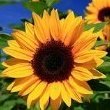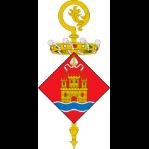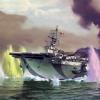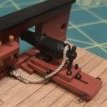-
Posts
597 -
Joined
-
Last visited
Reputation Activity
-
 Dziadeczek got a reaction from KeithAug in Tapering tool/jig and planer.
Dziadeczek got a reaction from KeithAug in Tapering tool/jig and planer.
I think this tool is just a waste of money and an overkill. A mini plane made of ebony? Why? To increase its price?
Comparable mini wood plane you should be able to get online for a few dollars (perhaps up to 10 today).
From a few pieces of wood scraps in your workshop you should be able to make yourself a simple jig to shape (shave) your planks.
See post nr. 27 at the bottom of this link, where I showed this simple jig. Easy peasy...
-
 Dziadeczek got a reaction from druxey in Cut and Paste - downloadable e-book featuring the work of Ab Hoving
Dziadeczek got a reaction from druxey in Cut and Paste - downloadable e-book featuring the work of Ab Hoving
Fantastic!
-
 Dziadeczek got a reaction from mtaylor in Cut and Paste - downloadable e-book featuring the work of Ab Hoving
Dziadeczek got a reaction from mtaylor in Cut and Paste - downloadable e-book featuring the work of Ab Hoving
Fantastic!
-
 Dziadeczek got a reaction from hollowneck in Cut and Paste - downloadable e-book featuring the work of Ab Hoving
Dziadeczek got a reaction from hollowneck in Cut and Paste - downloadable e-book featuring the work of Ab Hoving
Fantastic!
-
 Dziadeczek got a reaction from Canute in Cut and Paste - downloadable e-book featuring the work of Ab Hoving
Dziadeczek got a reaction from Canute in Cut and Paste - downloadable e-book featuring the work of Ab Hoving
Fantastic!
-
 Dziadeczek got a reaction from bruce d in Cut and Paste - downloadable e-book featuring the work of Ab Hoving
Dziadeczek got a reaction from bruce d in Cut and Paste - downloadable e-book featuring the work of Ab Hoving
Fantastic!
-
 Dziadeczek got a reaction from FrankWouts in Cutty Sark by Bruma - Revell - 1:96 - PLASTIC
Dziadeczek got a reaction from FrankWouts in Cutty Sark by Bruma - Revell - 1:96 - PLASTIC
You can do oils on top of acrylics, but you cannot do acrylics on top of oils! According to an old artists/painters' principle: "fat on lean OK, but NEVER lean on fat! " (meaning oil paints are fat, but acrylics are lean (thinned with water).
-
 Dziadeczek got a reaction from Obormotov in Harold Hahn method
Dziadeczek got a reaction from Obormotov in Harold Hahn method
Years ago I built my French 74 gun ship upside down, mounted in H. Hahn's building base, following his method (sort of). I remember, I had to add (draw) the remaining frames, since J. Boudriot only has shown in his books the so called, station frames. The hull turned out OK, not perfect though, but - for the first scratch built, Admiralty type model, - acceptable.
Right now I am starting to install the running rigging on it.
Thomas
-
 Dziadeczek got a reaction from catopower in Marine Modelling Books
Dziadeczek got a reaction from catopower in Marine Modelling Books
Hi Martin,
I don't know about any Czech shipmodeling book, but for a beginner I would recommend three (at least), all in English:
- Wolfram zu Mondfeld
- Frank Mastini
- Milton Roth
(the last one is a little dated now, as far as sources of materials, but still valuable as far as some modeling techniques)
And there is a bunch of other, more advanced books depending on the specific topic, like rigging, planking, armament, sewing (sails), etc...
Plus, you have many monographies describing in detail a specific ship.
The best however source of info, I think, is still this Forum, and in addition you have your native (Czech) speaking forum, where among the others, famous Doris Obrucova belongs to. (I don't have their link at the moment - check archival posts.)
Greetings,
Thomas
-
 Dziadeczek got a reaction from mtaylor in Marine Modelling Books
Dziadeczek got a reaction from mtaylor in Marine Modelling Books
Hi Martin,
I don't know about any Czech shipmodeling book, but for a beginner I would recommend three (at least), all in English:
- Wolfram zu Mondfeld
- Frank Mastini
- Milton Roth
(the last one is a little dated now, as far as sources of materials, but still valuable as far as some modeling techniques)
And there is a bunch of other, more advanced books depending on the specific topic, like rigging, planking, armament, sewing (sails), etc...
Plus, you have many monographies describing in detail a specific ship.
The best however source of info, I think, is still this Forum, and in addition you have your native (Czech) speaking forum, where among the others, famous Doris Obrucova belongs to. (I don't have their link at the moment - check archival posts.)
Greetings,
Thomas
-
 Dziadeczek reacted to DocRob in Mariner's Astrolabe, full scale, AON
Dziadeczek reacted to DocRob in Mariner's Astrolabe, full scale, AON
I just stumbled over this very interesting project of yours, the print looks great Alan
If you are looking for extremely good metallic colors, my weapon of choice since years is always AK's Extreme Metal range, at least if you consider airbrushing. They have all the important non ferrous metals in their range, like copper, brass and bronze. They have an extremely fine grain and airbrush un thinned perfectly. They are not suitable for brush painting though.
AK has also a range of metallic waxes, (True Metal) which can be brushed, applied with cotton swabs or cloth and they do look good and 'metallic' too
Here are some non ferrous examples of my Nautilus build with Extreme colors applied (bronze, brass and copper mainly, but also stainless steel and gun metal).
It's hard to show the shininess and metal likehood in the pics, but at least, I tried . I hope that helps a bit
Later in the build, I patinaed the whole sub with pastels and pigments, which came out satisfactory to my eye.
Cheers Rob
-
 Dziadeczek got a reaction from Dave_E in Rattlesnake Quarterdeck Bulkhead Design
Dziadeczek got a reaction from Dave_E in Rattlesnake Quarterdeck Bulkhead Design
That's not a round house, that's a capstan, at least per MS plans.
-
 Dziadeczek got a reaction from Belco in Any hints, ideas how to scratchbuild anchors?
Dziadeczek got a reaction from Belco in Any hints, ideas how to scratchbuild anchors?
I made mine from ebony, but later on I decided to paint them with an iron-looking paint, because the ebony looked too much like 'ebony' and not enough like iron. So, any hardwood should be OK, provided that you paint them afterwards with flat black paint.
Greetings,
Thomas
-
 Dziadeczek reacted to ccoyle in Nieuport 11c.1 by ccoyle - FINISHED - Kartonowa Kolekcja - 1:33 - CARD
Dziadeczek reacted to ccoyle in Nieuport 11c.1 by ccoyle - FINISHED - Kartonowa Kolekcja - 1:33 - CARD
The Big Reveal!
The Lewis gun took about three hours to build, but now she is all done. I really enjoyed this build -- quite refreshing after the struggles with the GPM Hellcat. I can't recommend the Kartonowa Kolekcja kits highly enough -- try one! Now, enjoy the pictures!
First, the Lewis gun. The Allies didn't have synchronization gear at this point in the war, so the Lewis gun was mounted to fire above the propeller arc.
And now for the glamour shots!
And lastly, a family photo of the two KK kits together, the Nieuport and the DH.82A.
Thanks for looking in!
-
 Dziadeczek reacted to Javlin in P-51 "American Beauty" by Javlin - FINISHED - Trumpeter - 1/32
Dziadeczek reacted to Javlin in P-51 "American Beauty" by Javlin - FINISHED - Trumpeter - 1/32
I am calling this one done Guys even for a Trumpter Kit and all the decal issues she came out pretty good.
-
 Dziadeczek got a reaction from barkeater in Any hints, ideas how to scratchbuild anchors?
Dziadeczek got a reaction from barkeater in Any hints, ideas how to scratchbuild anchors?
I made mine from ebony, but later on I decided to paint them with an iron-looking paint, because the ebony looked too much like 'ebony' and not enough like iron. So, any hardwood should be OK, provided that you paint them afterwards with flat black paint.
Greetings,
Thomas
-
 Dziadeczek got a reaction from WalrusGuy in Any hints, ideas how to scratchbuild anchors?
Dziadeczek got a reaction from WalrusGuy in Any hints, ideas how to scratchbuild anchors?
I made mine from ebony, but later on I decided to paint them with an iron-looking paint, because the ebony looked too much like 'ebony' and not enough like iron. So, any hardwood should be OK, provided that you paint them afterwards with flat black paint.
Greetings,
Thomas
-
 Dziadeczek got a reaction from clogger in Any hints, ideas how to scratchbuild anchors?
Dziadeczek got a reaction from clogger in Any hints, ideas how to scratchbuild anchors?
I made mine from ebony, but later on I decided to paint them with an iron-looking paint, because the ebony looked too much like 'ebony' and not enough like iron. So, any hardwood should be OK, provided that you paint them afterwards with flat black paint.
Greetings,
Thomas
-
 Dziadeczek got a reaction from Harvey Golden in Any hints, ideas how to scratchbuild anchors?
Dziadeczek got a reaction from Harvey Golden in Any hints, ideas how to scratchbuild anchors?
I made mine from ebony, but later on I decided to paint them with an iron-looking paint, because the ebony looked too much like 'ebony' and not enough like iron. So, any hardwood should be OK, provided that you paint them afterwards with flat black paint.
Greetings,
Thomas
-
 Dziadeczek reacted to Hubac's Historian in Soleil Royal by Hubac's Historian - Heller - An Extensive Modification and Partial Scratch-Build
Dziadeczek reacted to Hubac's Historian in Soleil Royal by Hubac's Historian - Heller - An Extensive Modification and Partial Scratch-Build
Well, Ian, thank you! I have been known to practice a little home dentistry, when necessary, so I suppose those abilities see some light of day.
There hasn’t been a whole lot of time to put into the ship this past week, as a dear friend from Sweden has been visiting. It has been an extremely social and active time for me.
I have managed to continue detailing the port headrails. This is very time consuming because all of these fine border mouldings have to be cut and fit by hand. I decided that the best course for the middle rail was to affix the top moulding and leave the bottom moulding off until I had fit and secured each section of the bellflower garland:
The forward end of the headrails gets an inside bevel so that I will have some glue surface to attach to the upper knee of the head, just behind the figurehead:
As it stands, I am modeling the bellflower garland. This is, naturally, time-consuming, but the effort is always worthwhile:
After that is complete, I will make the inside lamination for the horse carving from 1/16” styrene. Most of this figure, as you will see in a minute, rests above the f’ocsle sheer rail. As with the drift-rail serpent ornaments, I want a more 3-D appearance for this carving. It will make a tremendous difference, in the end.
So, at this point, I wanted to really suss-out what my exact headrail positioning will be. It is complicated by numerous considerations and hard realities of the kit. It is impossible to do this perfectly, and according to actual practice of the times. What I can do, however, is prioritize those aspects of the construction that I most want to improve upon.
To that end, I have already lowered the forward scroll below the level of the sprit-mast. Next in importance are the transverse support timbers for the headrails: I wanted to create enough open space for elegantly arching supports, instead of something that was more flatly aligned with the horizon. I think that this spacing provides for that:
The fundamental problem with the kit architecture is that the forward sheer of the lower main wales rises too dramatically. The whole knee structure of the head should, in fact, be a good bit lower. Consequently, I am having to choose to position the horse carving a little higher on the f’ocsle sheer rail than I would ideally like. I can live with this. There is another important implication concerning the run of the beakhead grating that I will discuss in a moment.
On the plus side, the lowest point of the headrails does not dip below the level of the middle main wales. I also really like the harmonic sweep of the knees and the headrails:
Really keen observers will note that the Berain/Vary drawings show the forward and aft headrail medallions in the same plane:
However, super-keen observers will note that both of these drawings mysteriously and completely ignore the presence of the f’ocsle deck, which would have raised the f’ocsle sheer a step. So, I don’t think I am wrong to represent the aft medallion as being in a higher plane.
Although, as discussed, I still find it necessary to incorporate some shape to these headrails, I do not find it to be terribly exaggerated or noticeable:
And, finally - the second complication of the abruptly rising sheer of the lower main wales; the beakhead grating on French ships of the period should run behind and follow the curve of the upper headrail. I, on the other hand, have chosen to prioritize the sweep of the headrail support timbers. Consequently, I will run the beakhead grating in-line with the middle headrail:
It isn’t exactly correct, but it will make it easy to tuck my new seats of ease between the beakhead deck and the headrails, as Michel Saunier did here:
Photo, courtesy of Marc Yeu
Next, I have to pierce the beakhead bulkhead for the cathead timbers, so that I can figure out the ideal placement for the cathead support carvings.
None of this is exactly right or perfect, but considered in its entirely it will be better and closer to the truth than what Heller has presented out-of-box. As always, thank you for stopping by. More to follow…
-
 Dziadeczek got a reaction from mtaylor in How to handle ships rigging related to battle damaged sails
Dziadeczek got a reaction from mtaylor in How to handle ships rigging related to battle damaged sails
I have this one by Crepin.
-
 Dziadeczek got a reaction from hollowneck in How to handle ships rigging related to battle damaged sails
Dziadeczek got a reaction from hollowneck in How to handle ships rigging related to battle damaged sails
I have this one by Crepin.
-
 Dziadeczek got a reaction from BenD in How to handle ships rigging related to battle damaged sails
Dziadeczek got a reaction from BenD in How to handle ships rigging related to battle damaged sails
I have this one by Crepin.
-
 Dziadeczek got a reaction from thibaultron in How to handle ships rigging related to battle damaged sails
Dziadeczek got a reaction from thibaultron in How to handle ships rigging related to battle damaged sails
I have this one by Crepin.
-
 Dziadeczek got a reaction from catopower in Question about rigging leech ropes around silk-like thin sails
Dziadeczek got a reaction from catopower in Question about rigging leech ropes around silk-like thin sails
I am sure there are many different ways to do it and some members will explain their techniques, but I do it in the following faschion:
I use a very thin cotton fabric for my sails, instead of silkspan. I found it in my local fabric store (www.moodfabrics,com) a fabric known as cotton muslin, already factory coloured into a nice cream (eggshell) color - perfect for sails, so I don't need to color it by myself. It is used primarilly for linings for suits or similar. But my model is in 1:48 scale, so this muslin is barely thin enough for my sails. It might be too thick for your model though, if your scale is smaller.
I wanted to show all sewn details of my sails, and I feared that silkspan, being soooo thin and delicate, would not allow this...
After preparing my sails in the traditional way, I attach (glue) to their edges a bolt rope, making sure that it isn't attached to the edge of a sail, but instead it lays ON the edge, on the AFT side of the sail. After the glue (white glue like Elmer's), slightly diluted with water, has dried, I sew the rope with a very thin needle and thin thread of almost the same (only slightly darker) color that the sail itself, like on the attached pic. I found out that if I leave the rope only glued there, it has a tendency to split from the sail, if you manipulate it with your fingers. Sewing it, reinforces the bond and secures it.
It is an extremely tedious and time consuming process (if you think, tying ratlines is tedious, think again!), I work with magnifier Optivisor and have a thimble on my finger to push the needle through the slightly stiffened (by glue) fabric. I place the sail on a rubber mat, like yours, but on top of that mat I place a piece of ordinary cardboard and only then I place my sail on top of it. The cardboard allows me to push the needle through the rope and the sail and a bit more (perhaps 2 to 3 mm - the thicknes of cardboard) on the other side. It is easier than, to push it all the way through. I sew through the middle of the rope and through the sail, just perhaps 1 mm from its edge. After the sewing, the thread is nearly invisible, only from a very close distance, say a few cm, similar to full size sails.






.jpg.d84ec4dad1d7791e855dca06210ab6f3.thumb.jpg.f45209242e851d4409eca1a09293165b.jpg)





.thumb.jpg.62d1d69fed1f32364417cb1f9cdeb009.jpg)



